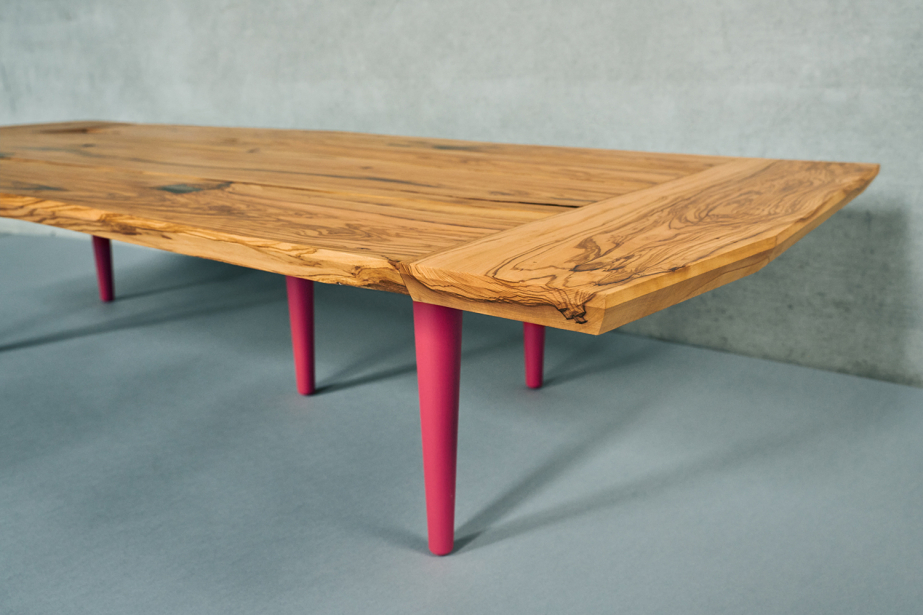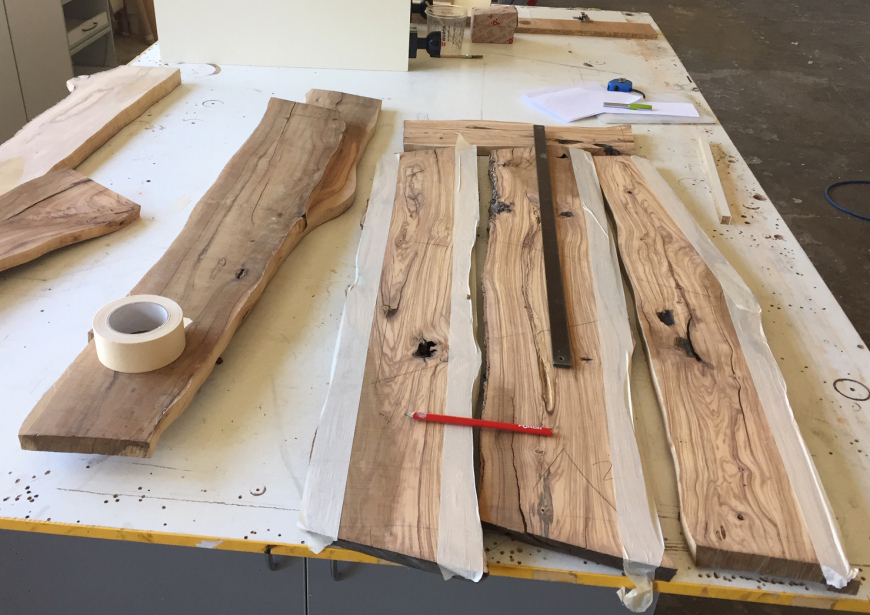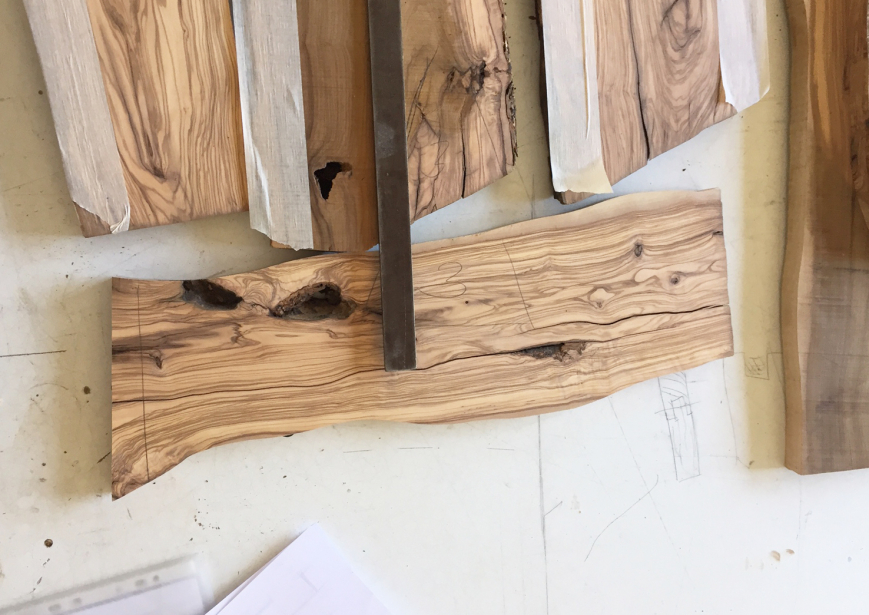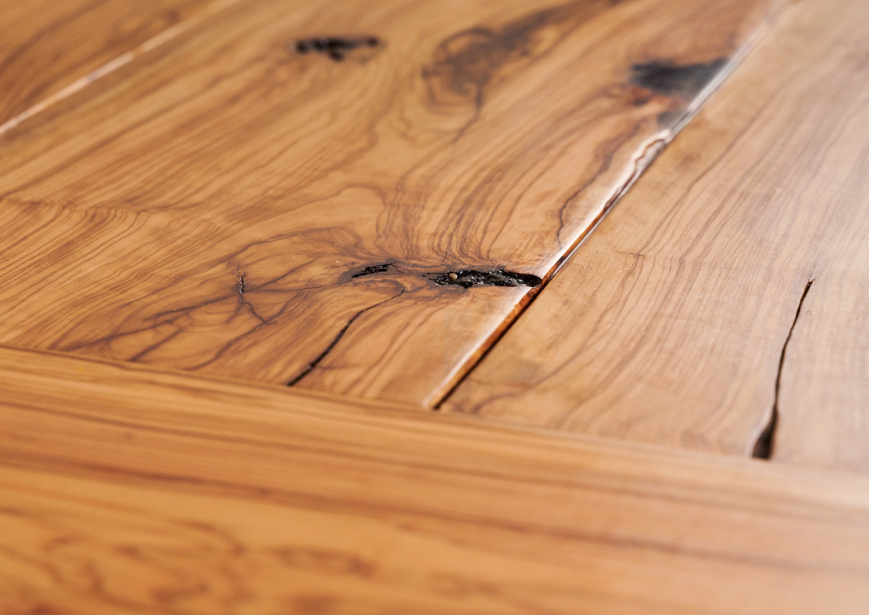The Olive Table
A few years ago, my father decided to have a few of his olive trees cut down, as they were very old and had long since stopped producing olives. He said, “If you want, you can take the best or most attractive boards from the olive trees and make something out of them.” I stored these boards for a while, without finding any use for them. They were too uneven and too heavy. A few had large holes and other imperfections.
George Nakashima, one of the most talented designers and woodworkers who has ever lived, used various types of wood. His aim was to produce no waste, no wood scraps. The imperfections of the wood contributed to the uniqueness of his furniture. He worked on the edges, trying to follow the natural contours of the bark, and left the cracks and irregularities in his pieces without filling them in or covering them up. As a result, the wooden boards from Nakashima have their own uniqueness.
Ligurian olive wood is also unique, narrow and crooked, making it very difficult to work. Its uniqueness lies in the grain. Every piece tells a story, for example, of a harsh winter, an exceptional harvest, an illness caused by an insect or a summer without rain.







